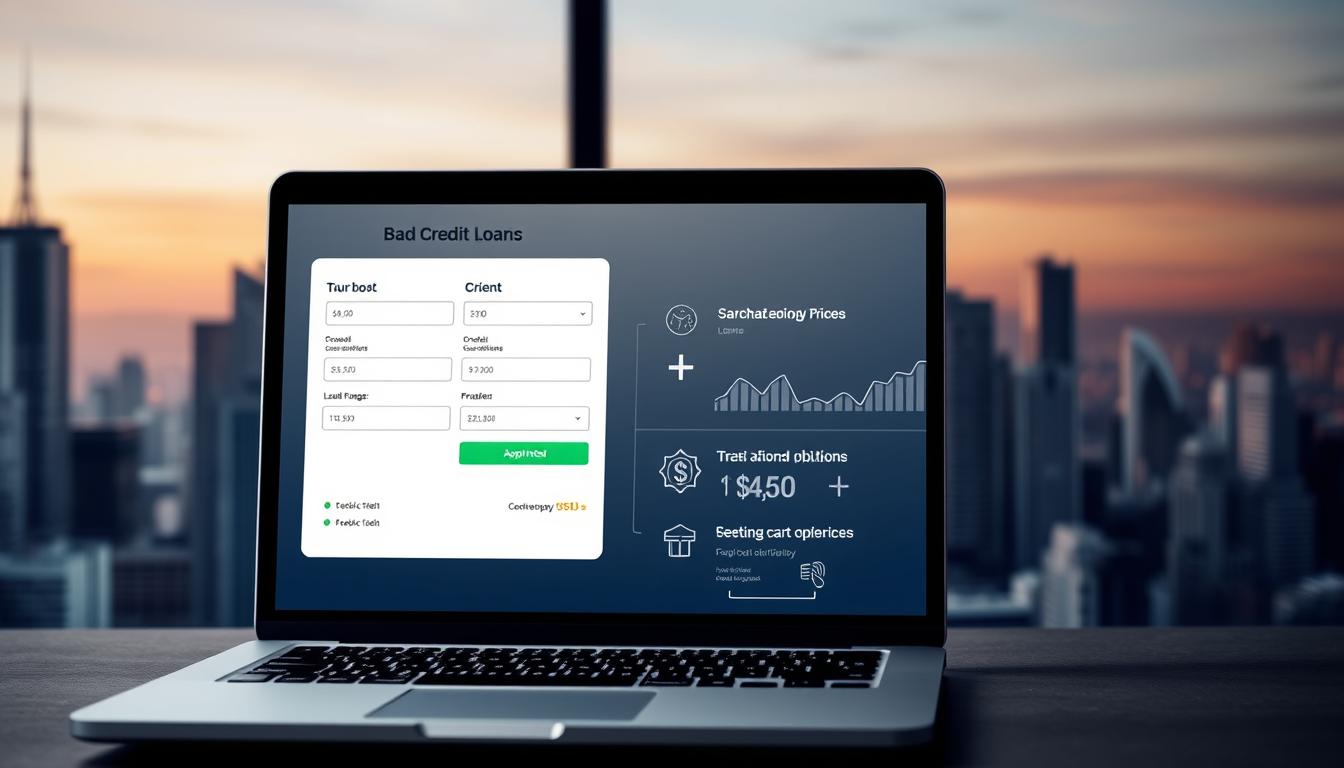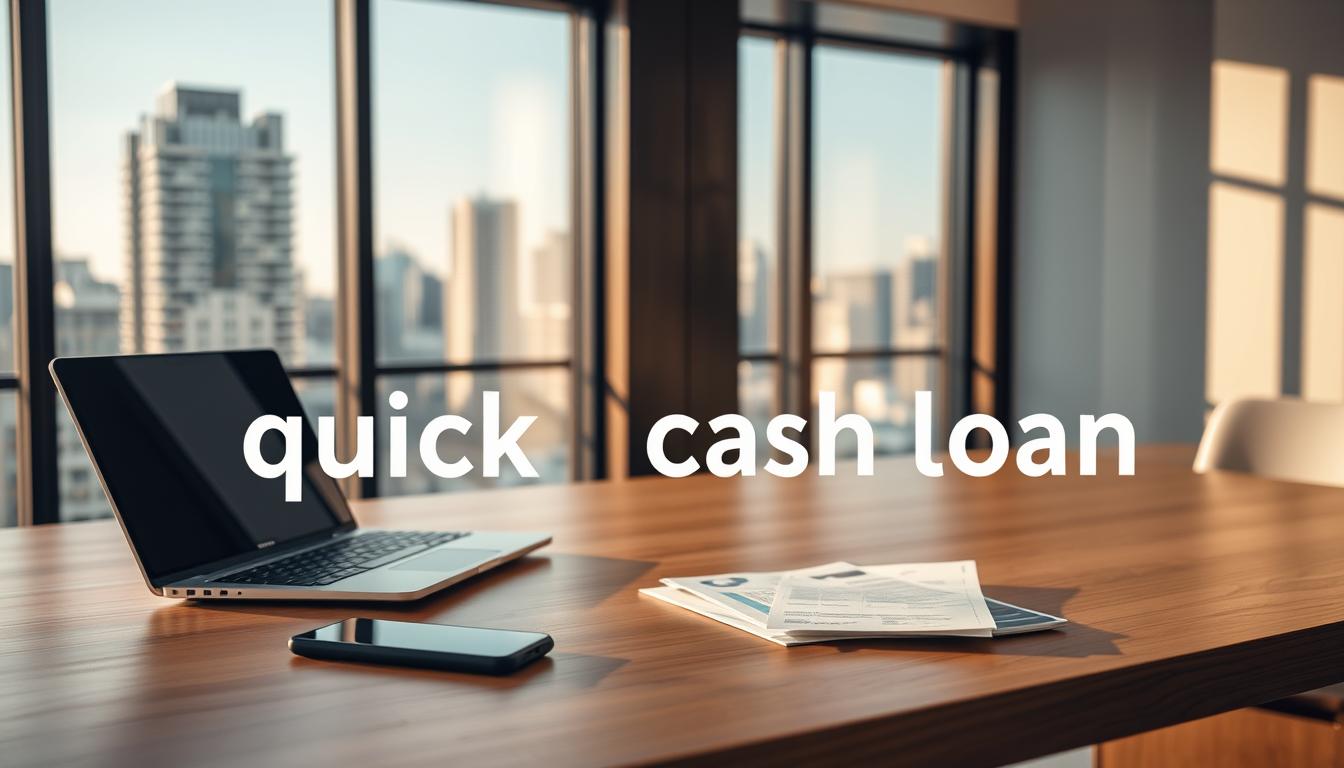Find Affordable Home Loans for Your Needs
Did you know the Texas State Affordable Housing Corporation (TSAHC) helps both first-time and repeat buyers? They offer mortgage loan options with lower down payments. This makes owning a home more accessible to more people.
Finding the right mortgage loan can seem hard. But, with the right help, you can get affordable loan rates that match your budget. At Bank of America, there are many mortgage solutions. These include options with low down payments and flexible credit rules.
Key Takeaways
- TSAHC offers mortgage loan options with lower down payments.
- Various mortgage solutions are available, including FHA & VA loans.
- Fixed-rate and adjustable-rate mortgages can be considered.
- Loan options are designed for different financial situations.
- Professional guidance can help in selecting the right mortgage plan.
Understanding Home Loans and Their Types
Getting a home often means looking at different loan options. Each has its own good and bad points. It’s key to know the basics and types of mortgage loans to make a smart choice.
What is a Home Loan?
A home loan, or mortgage, lets you borrow money to buy a home. You agree to make regular payments, which cover interest and part of the loan. Mortgage loans are a big deal, so it’s important to understand the terms.
Types of Home Loans Available
There are many home loans out there, for different needs and goals. You can choose from conventional, FHA, VA, and USDA loans. Each has its own rules and perks. For example, Bank of America has fixed and adjustable-rate mortgages to fit various needs.
- Conventional Loans: These loans are not insured by the government and come from private lenders.
- FHA Loans: Insured by the Federal Housing Administration, these loans need lower down payments.
- VA Loans: These loans are for veterans, active-duty military, and surviving spouses, with good terms.
- USDA Loans: For homes in rural areas, these loans let you finance with no down payment.
Fixed-Rate vs. Adjustable-Rate Mortgages
Choosing between a fixed-rate and an adjustable-rate mortgage is a big decision. A fixed-rate mortgage has the same interest rate for the whole loan term. This means your monthly payments stay the same. An adjustable-rate mortgage might start with a lower rate, but it can change with the market, affecting your payments.
Think about your finances, future plans, and how much risk you can take. The Federal Housing Administration (FHA) insures loans, which can help you get a better deal. This might be good if you’re looking at an adjustable-rate mortgage.
How to Determine Your Budget for a Home Loan
Before you apply for a home loan, it’s important to check your finances. Knowing your financial health helps figure out how much you can borrow.
Assessing Your Financial Situation
Start by collecting all your financial documents. This includes your income, bank accounts, debts, and credit reports. Your credit score is key for loan approval and can change your interest rate.
Look at your monthly bills and savings to see how much you can spend. Tools like TSAHC’s Eligibility Quiz can show if you qualify for certain loans.
Understanding Loan Affordability
Loan affordability is more than just how much you can borrow. It’s about what you can pay back each month. Mortgage loans have different terms that can change your payments.
Remember to include extra costs like property taxes and insurance. These can really add up to your monthly expenses.
Utilizing Mortgage Calculators
Mortgage calculators are great for estimating your monthly payments. Bank of America’s mortgage calculator is a good tool to see your potential payments.
Try different loan amounts and interest rates to see how they change your payments. This helps you make a better choice for your home loan.
| Loan Amount | Interest Rate | Monthly Payment |
|---|---|---|
| $200,000 | 4% | $955 |
| $250,000 | 4.5% | $1,267 |
| $300,000 | 5% | $1,610 |
Knowing your budget and using mortgage calculators helps you through the home loan process. By checking your finances and understanding affordability, you can make smart choices about your loan.
The Application Process for Home Loans
Getting a home loan can seem hard, but knowing the steps makes it easier. When you apply for a home loan, there are key steps to follow for success.
Pre-Approval vs. Pre-Qualification
First, you might get pre-approved or pre-qualified for a mortgage. These terms are often mixed up, but they mean different things. Pre-qualification is a quick check to see how much you might borrow. It’s based on a quick look at your finances and doesn’t check your credit deeply.
Pre-approval is a more serious promise from a lender. They say how much they’ll lend you after checking your credit in detail.
For example, Bank of America asks for pre-qualification or pre-approval before you apply for a mortgage. This shows how important these early steps are.
Required Documents for Application
When you’re ready to apply for a mortgage, you’ll need some documents. These include:
- Identification documents (driver’s license, passport)
- Proof of income (pay stubs, W-2 forms)
- Bank statements
- Tax returns
- Proof of assets (investment accounts, retirement savings)
Having these documents ready can make the application process smoother. It also helps you get approved faster.
Timeline for Approval
The time it takes to get a loan approved can vary a lot. It depends on your financial situation and the lender’s speed. Usually, it takes 30 to 45 days, but it can take longer.
| Stage | Typical Duration |
|---|---|
| Pre-approval/Pre-qualification | 1-3 days |
| Mortgage Application | 1-2 days |
| Processing and Underwriting | 15-30 days |
| Final Approval and Closing | 1-2 weeks |
Financial experts say, “The home loan process needs patience and preparation. Knowing the steps helps you get through it better.”
Some programs, like those from TSAHC, require a home buyer education course before closing. This helps in the approval process and teaches buyers about managing their mortgage.
Factors That Influence Interest Rates
Knowing what affects interest rates is key to getting a good home loan. Several things can change the interest rate you get when you apply for a home loan.
Credit Score Importance
Your credit score is very important for your interest rate. Bank of America says it has a big impact. A better credit score means a lower interest rate. But a lower score can mean a higher rate.
Tips for improving your credit score:
- Make timely payments
- Keep credit utilization low
- Monitor your credit report for errors
Market Conditions and Rates
Market conditions also affect interest rates. Things like inflation and job rates can change rates. For example, when the economy grows, rates might go up to fight inflation.
Loan-to-Value Ratio
The loan-to-value (LTV) ratio is also important. It’s the amount you borrow compared to the property’s value. A lower LTV ratio can get you a better interest rate.
| LTV Ratio | Interest Rate Impact |
|---|---|
| Less than 60% | Lower interest rate |
| 60% to 80% | Standard interest rate |
| More than 80% | Higher interest rate |
Government-backed loans, like FHA and VA, have easier credit rules. This helps those with lower scores. Knowing these factors helps you understand the home loan process better.
Comparing Lenders for the Best Home Loans
Looking for the best home loans means comparing lenders. This step can save you thousands. With many lenders offering different options, it’s key to research well.
TSAHC partners with lenders to offer various mortgage loans. This partnership helps borrowers compare and choose the best loan for their finances.
Key Questions to Ask Lenders
Before picking a lender, ask important questions. Here are some:
- What are the interest rates and loan terms?
- Are there any origination fees or other charges?
- What is the reputation of the lender?
- How long does the loan process typically take?
These questions help you understand what each lender offers. This way, you can make a smart choice.
Online vs. Local Lenders
Online mortgage applications have increased options for borrowers. Bank of America offers online applications, making it easy to apply from home.
But, local lenders offer personalized service. They might be more flexible with unique financial situations.
| Lender Type | Advantages | Disadvantages |
|---|---|---|
| Online Lenders | Convenience, Quick Application Process | Less Personalized Service |
| Local Lenders | Personalized Service, Flexibility | More Time-Consuming Process |
Understanding Closing Costs
Closing costs are a big part of the home loan process. They include fees for appraisal, title insurance, and more. Bank of America provides clear info on closing costs.
Remember to include closing costs in your budget when comparing lenders. Some lenders might have lower rates but higher costs. Others might have higher rates but lower upfront costs.
By comparing lenders and understanding the total loan cost, you can find the best home loan for you.
Government-Backed Home Loan Programs
Getting a home can be easier with government-backed loans. These loans help make buying a home more accessible. They offer better terms and lower risks for lenders.
We’ll look at three main government-backed home loan programs: FHA loans, VA loans, and USDA loans. Each has its own benefits and rules for who can apply.
FHA Loans
FHA loans are insured by the Federal Housing Administration. This lets lenders offer better deals. Buyers can get a mortgage with a smaller down payment and a less strict credit score.
- Lower down payment requirements
- More lenient credit score requirements
- Lower mortgage insurance premiums compared to some conventional loans
VA Loans
VA loans are guaranteed by the Department of Veterans Affairs. They’re for eligible veterans, active-duty personnel, and surviving spouses. These loans have big perks, like no down payment needed and lower interest rates.
Key benefits of VA loans include:
- No down payment required
- Lower interest rates
- No private mortgage insurance (PMI) required
USDA Loans
USDA loans are backed by the United States Department of Agriculture. They’re for those buying homes in rural areas. These loans have good terms, like no down payment and lower mortgage insurance.
To get a USDA loan, you must meet income limits. You also need to buy a home in a rural area.

Tips for First-Time Home Buyers
First-time home buyers face a lot when getting a home loan. But, knowing the right steps can make it easier.
First, get your finances ready. Check your credit score, pay off debts, and have a steady income. A good credit score can lower your interest rate, making your mortgage cheaper.
Getting Your Finances in Order
Understanding your finances is key to getting a mortgage loan. Here are important things to think about:
- Credit score: Aim for 700 or higher for better rates.
- Debt-to-income ratio: Keep it below 36% to show you’re stable.
- Savings: Make sure you have enough for a down payment and closing costs.
Programs like TSAHC’s down payment assistance can help with initial costs for first-time buyers.
Finding the Right Mortgage
Once your finances are ready, find the right mortgage loan. Compare rates and understand your loan terms.
| Lender | Interest Rate | Down Payment Requirement |
|---|---|---|
| Bank of America | 3.75% | 3.5% |
| TSAHC | 4.0% | Variable |
Look into government-backed loans like FHA. They have more flexible credit score requirements.
Avoiding Common Pitfalls
First-time buyers should watch out for common mistakes. Don’t underestimate closing costs or overlook mortgage insurance.
Mortgage insurance can raise your monthly payments a lot. Make sure to include it in your budget.
Being informed and ready can help first-time buyers through the first-time homebuyer loan process. They can reach their dream of owning a home.
Refinancing Your Home Loan
Deciding to refinance your home loan depends on many factors. These include current interest rates and your financial goals. Refinancing means you replace your current mortgage with a new one, often with different terms.
When to Consider Refinancing
Refinancing is a good idea if interest rates have dropped since you got your loan. This can lower your monthly payments and save you money over time. Also, if your credit score has gone up, you might get better loan terms.
Think about refinancing if you want to change from an adjustable-rate to a fixed-rate mortgage. Or the other way around, depending on your financial situation and the market.
Benefits of Refinancing
Refinancing can bring several benefits. These include lower monthly payments, reduced interest rates, and the chance to use your home’s equity. According to Bank of America, it can also help you consolidate debt or remove private mortgage insurance (PMI).
- Lower monthly payments through reduced interest rates or extended loan terms.
- The ability to switch from an adjustable-rate to a fixed-rate loan for stability.
- Access to cash through a cash-out refinance, using your home’s equity.
Costs Involved in Refinancing
While refinancing can be beneficial, it’s important to think about the costs. These can include origination fees, appraisal fees, and closing costs. These costs can be 2% to 5% of the loan amount.
FHA and VA loans have specific refinancing options. Each has different costs and benefits. Knowing these costs is key to deciding if refinancing is right for you.

| Refinancing Option | Benefits | Typical Costs |
|---|---|---|
| Rate-and-Term Refinance | Lower interest rate, lower monthly payments | 2% – 5% of loan amount |
| Cash-Out Refinance | Access to home equity, debt consolidation | 2% – 5% of loan amount, plus the amount cashed out |
| FHA Refinance | Streamlined process, lower credit score requirements | Upfront mortgage insurance premium, other closing costs |
Frequently Asked Questions about Home Loans
When we look into getting home loans, many questions come up. Knowing these answers helps us understand the mortgage process better. It also helps us make smart choices.
Private Mortgage Insurance (PMI) Explained
Private Mortgage Insurance (PMI) is needed for buyers who put down less than 20% of the home’s price. Bank of America says PMI can raise your monthly payments. It’s important to think about this cost when looking at home loans.
Timeline for the Home Loan Process
The time it takes to get a home loan varies. TSAHC gives us a good idea of how long it usually takes. It can be a few weeks to a few months. This depends on how complex your application is and how fast the lender works.
Paying Off Your Home Loan Early
Pay off your home loan early to save on interest. But, check your loan terms first. You might face penalties for paying off your mortgage too soon.









